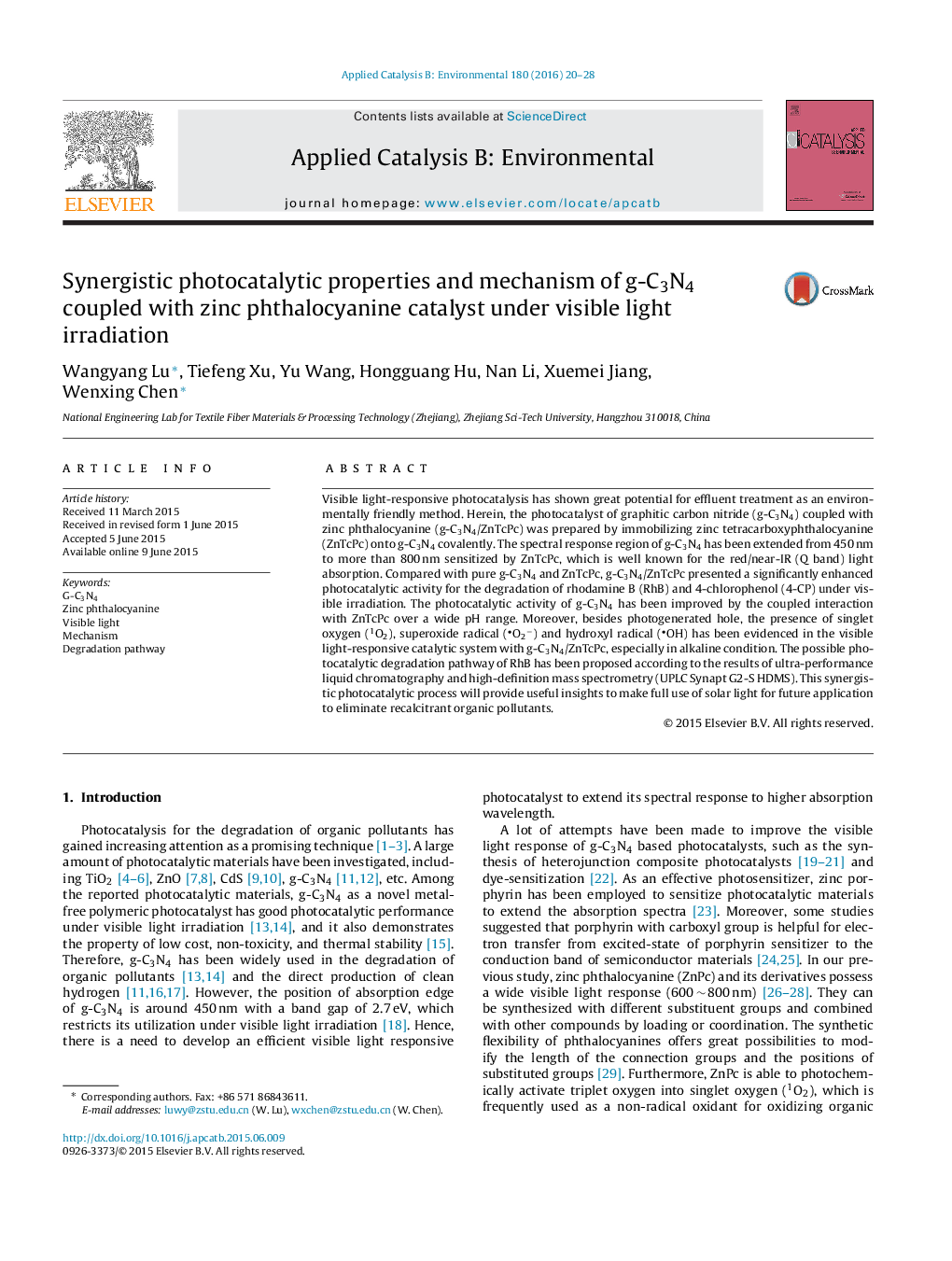| کد مقاله | کد نشریه | سال انتشار | مقاله انگلیسی | نسخه تمام متن |
|---|---|---|---|---|
| 45216 | 46407 | 2016 | 9 صفحه PDF | دانلود رایگان |

• Synergistic photocatalytic mechanism to eliminate recalcitrant organic pollutants.
• g-C3N4 coupled with ZnPc catalyst exhibits high photoactivity over a wide pH range.
• ZnPc greatly promotes the visible light-driven photocatalytic activity of g-C3N4.
• Effective method for broadening the spectral response region of photocatalysts.
• Provide useful insights to improve the performance of traditional photocatalysts.
Visible light-responsive photocatalysis has shown great potential for effluent treatment as an environmentally friendly method. Herein, the photocatalyst of graphitic carbon nitride (g-C3N4) coupled with zinc phthalocyanine (g-C3N4/ZnTcPc) was prepared by immobilizing zinc tetracarboxyphthalocyanine (ZnTcPc) onto g-C3N4 covalently. The spectral response region of g-C3N4 has been extended from 450 nm to more than 800 nm sensitized by ZnTcPc, which is well known for the red/near-IR (Q band) light absorption. Compared with pure g-C3N4 and ZnTcPc, g-C3N4/ZnTcPc presented a significantly enhanced photocatalytic activity for the degradation of rhodamine B (RhB) and 4-chlorophenol (4-CP) under visible irradiation. The photocatalytic activity of g-C3N4 has been improved by the coupled interaction with ZnTcPc over a wide pH range. Moreover, besides photogenerated hole, the presence of singlet oxygen (1O2), superoxide radical (O2−) and hydroxyl radical (OH) has been evidenced in the visible light-responsive catalytic system with g-C3N4/ZnTcPc, especially in alkaline condition. The possible photocatalytic degradation pathway of RhB has been proposed according to the results of ultra-performance liquid chromatography and high-definition mass spectrometry (UPLC Synapt G2-S HDMS). This synergistic photocatalytic process will provide useful insights to make full use of solar light for future application to eliminate recalcitrant organic pollutants.
Figure optionsDownload as PowerPoint slide
Journal: Applied Catalysis B: Environmental - Volume 180, January 2016, Pages 20–28